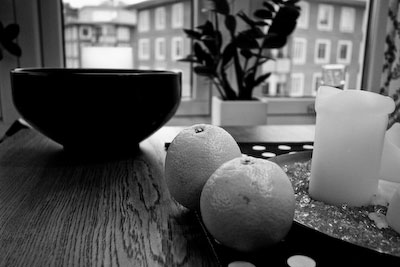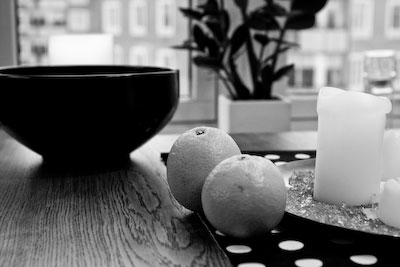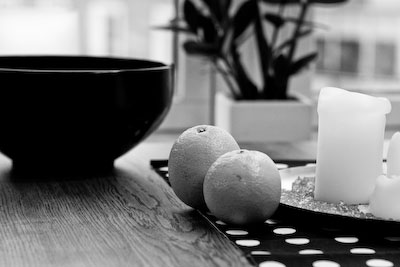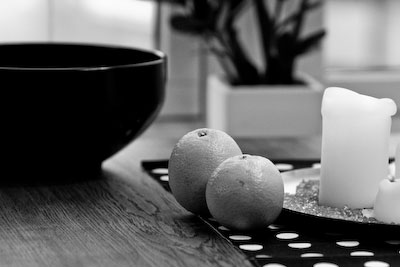The image looks different at different focal lengths
The focal length affects how an imaged subject looks on the finished image. The depth feeling in the image and how the area that is out of focus is to be imaged varies with the focal length used.
When taking pictures below, we moved back from the subject as we increased the focal length (zooming). We always tried to keep the same motif, the back orange, in focus.
It is interesting to see how the different focal lengths affect the end result.
 16 mm
16 mm
 35 mm
35 mm
 50 mm
50 mm
 100 mm
100 mm
 150 mm
150 mm
 300 mm
300 mm
In general, it can be said that the shorter focal lengths really illustrate the depth of the image; that there is actually some distance between the oranges and the bowl behind. If you change the lens and use a focal length of, for example, 150-300 mm, the image is flattened slightly and the feeling of depth disappears. At the same time, however, a completely different and more blurred image of the background in the image is formed.
Through these image examples, we have shown how to use different focal lengths on the same subject to obtain different results.
If I want to have a greater depth in the image, I use a shorter focal length.
If I want a smaller depth in the image but a creamier front and background, I use a longer focal length. The combination of a long focal length and large aperture, eg f / 2.8, gives a very creamy background or bokeh, as the blur in the picture is called among photographers.
A long focal length and large aperture can also have the motive to pop out more in the picture. Therefore, this combination is popular in sports photography and where, for example, in football, where you can thus get a player to be in focus while everything around him is blurred.